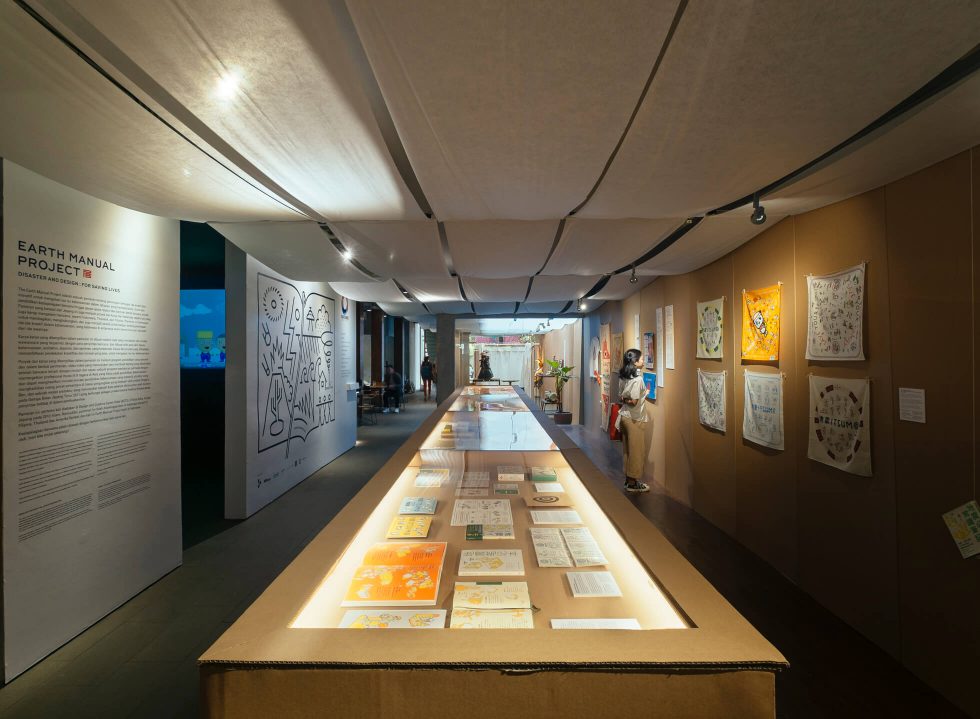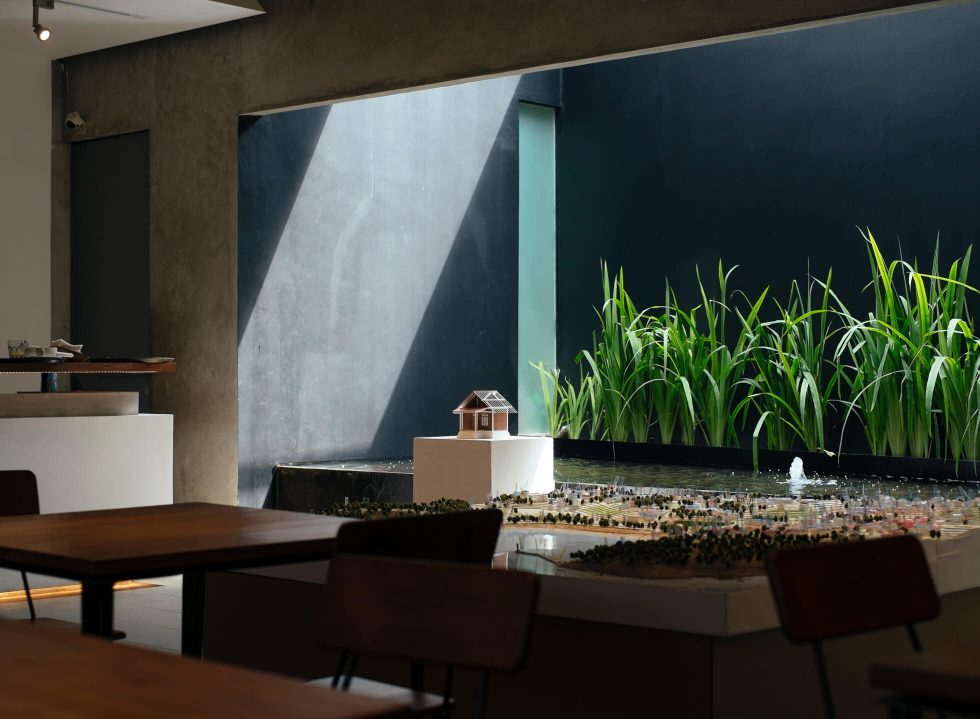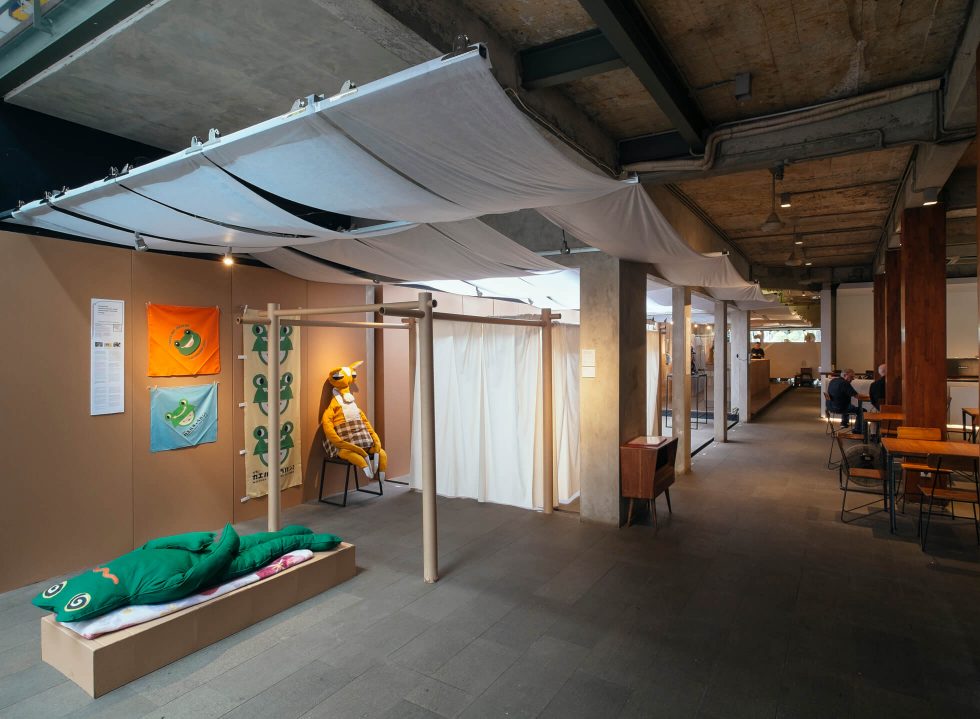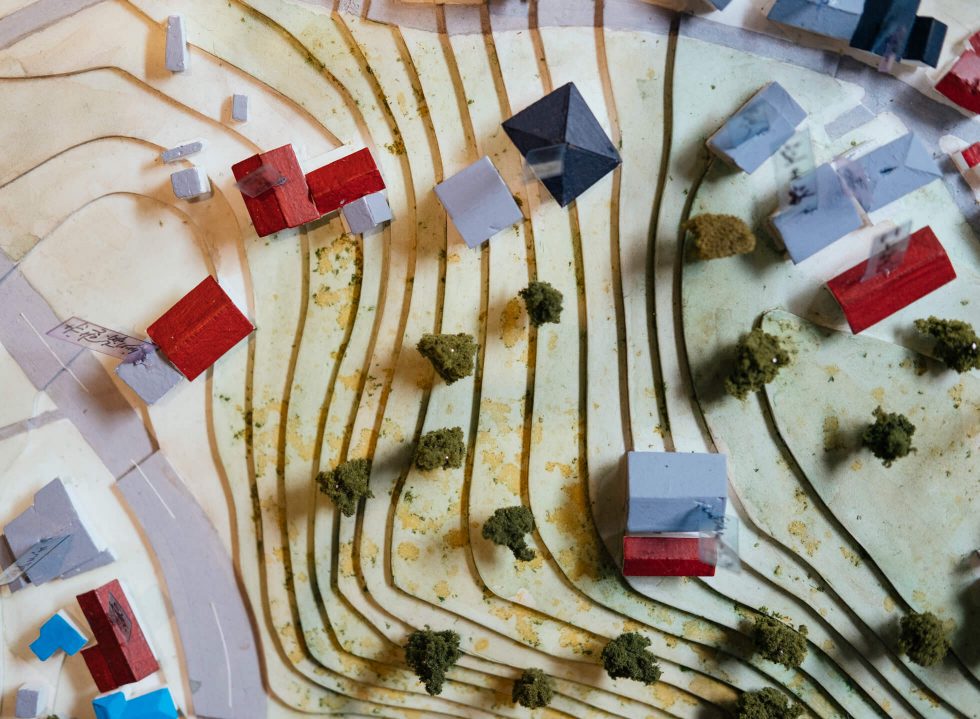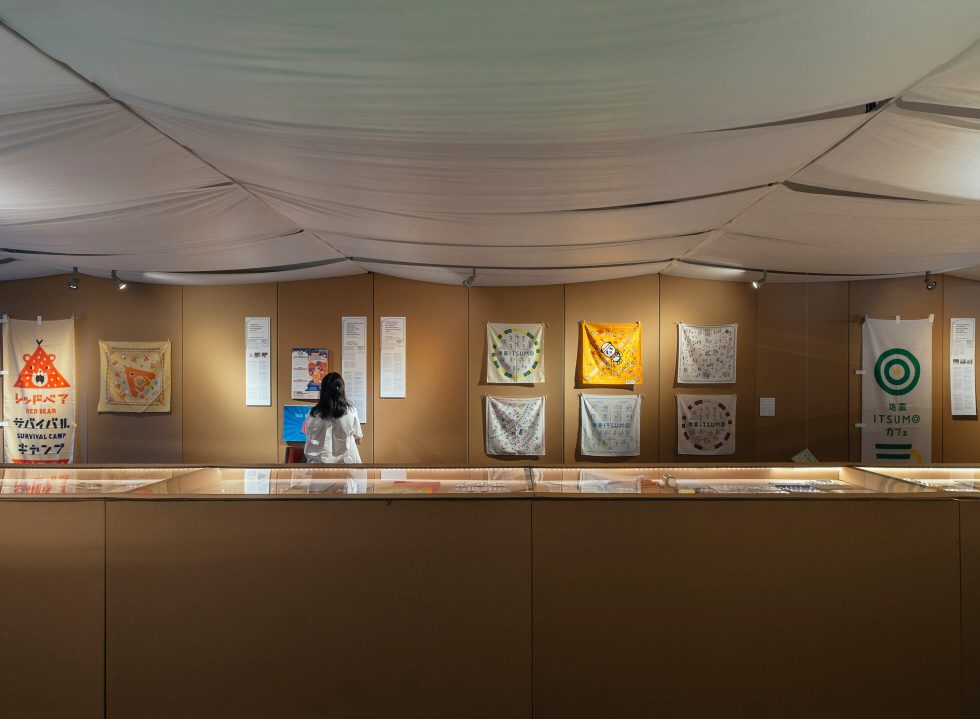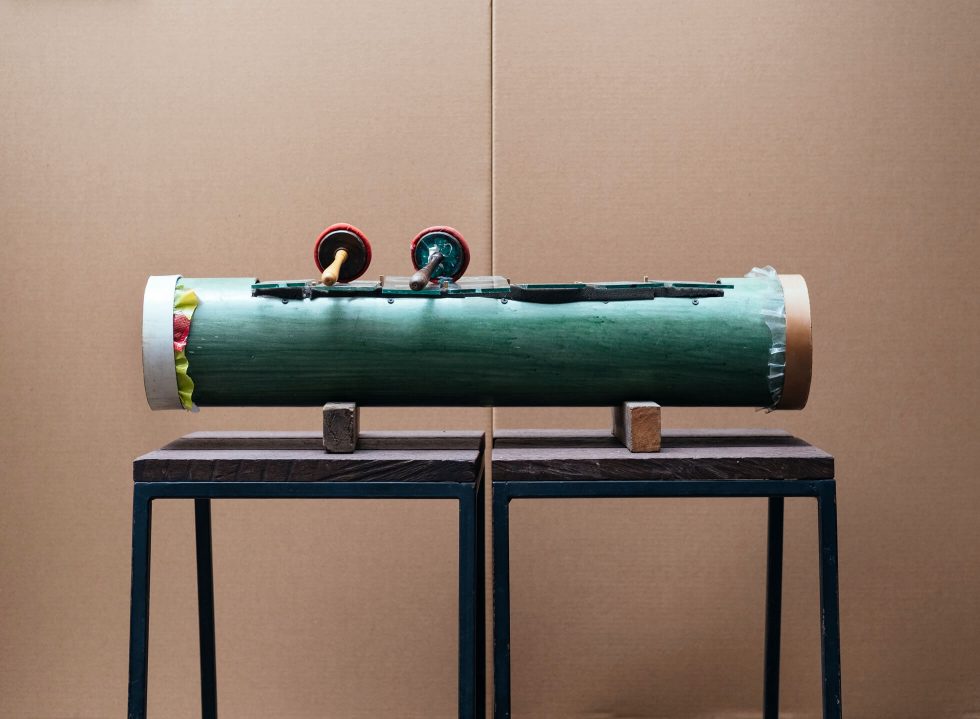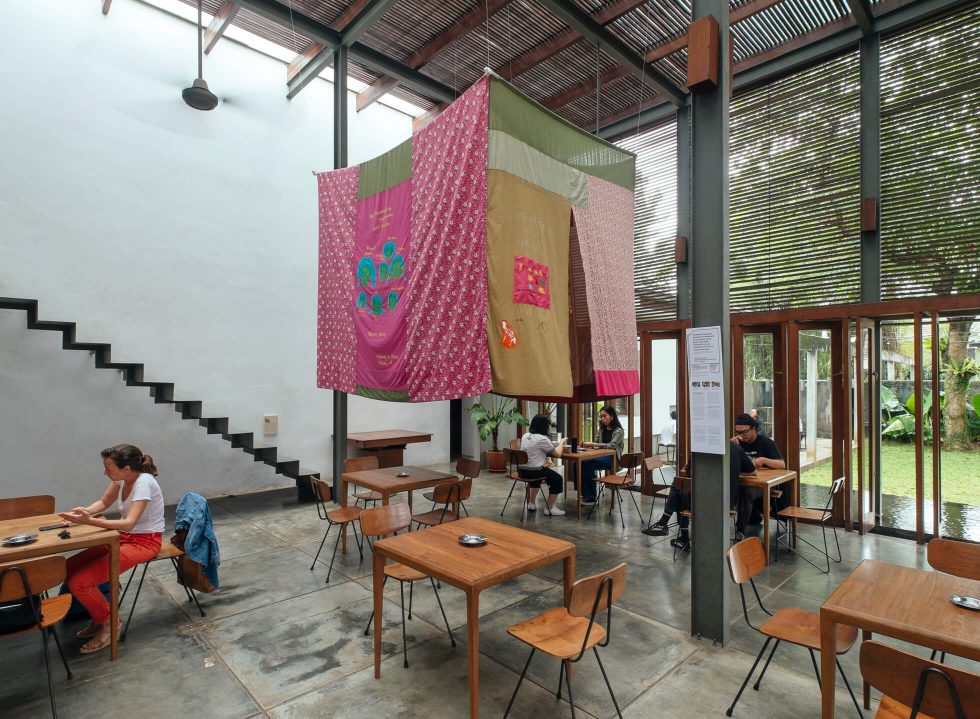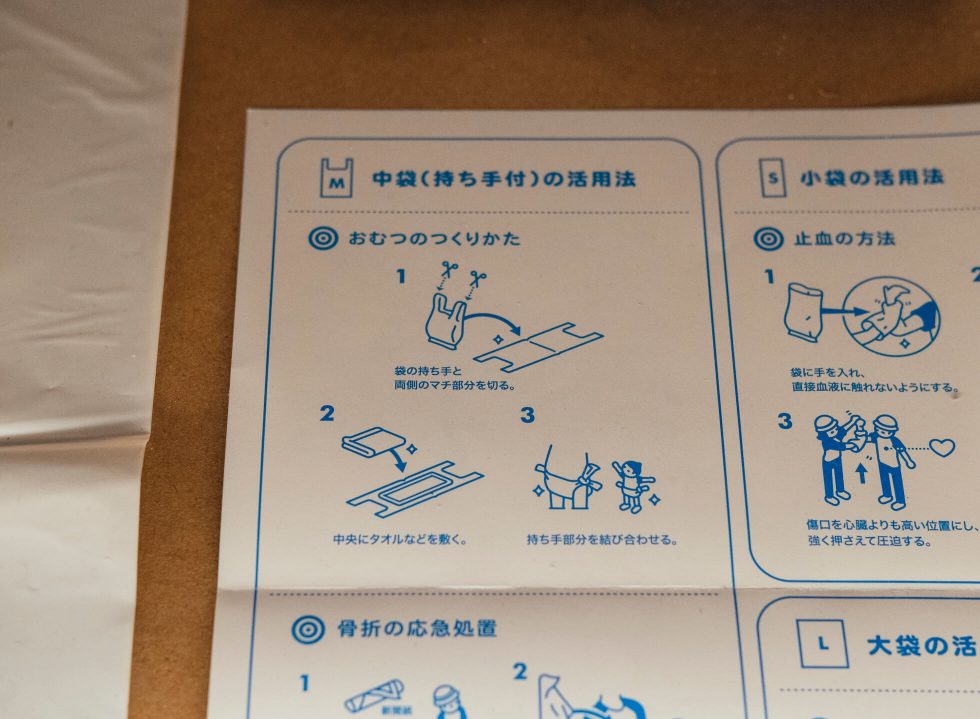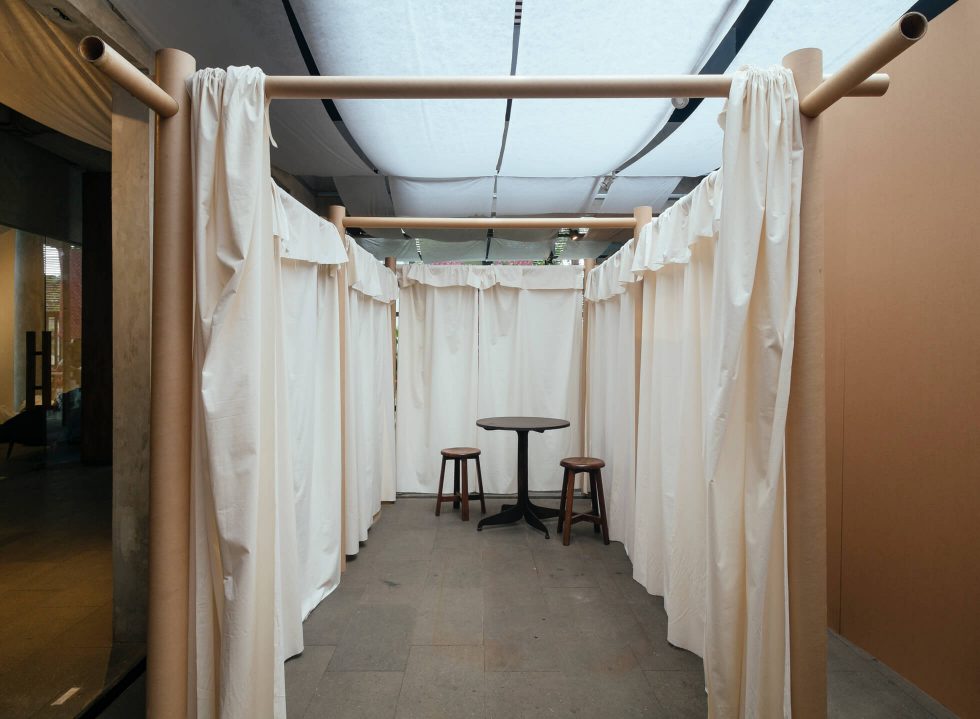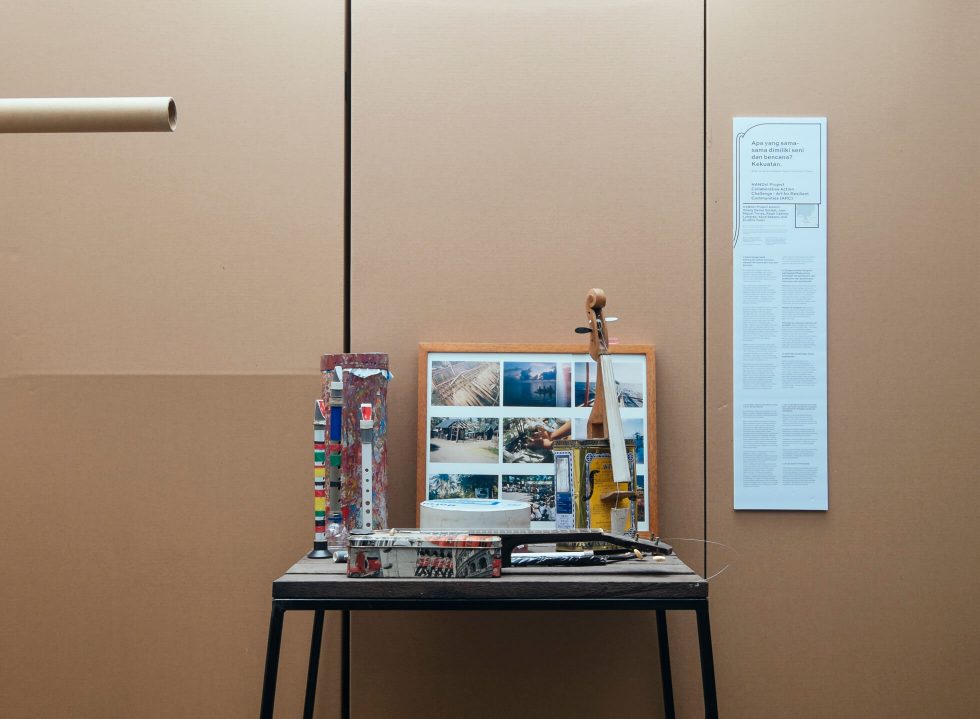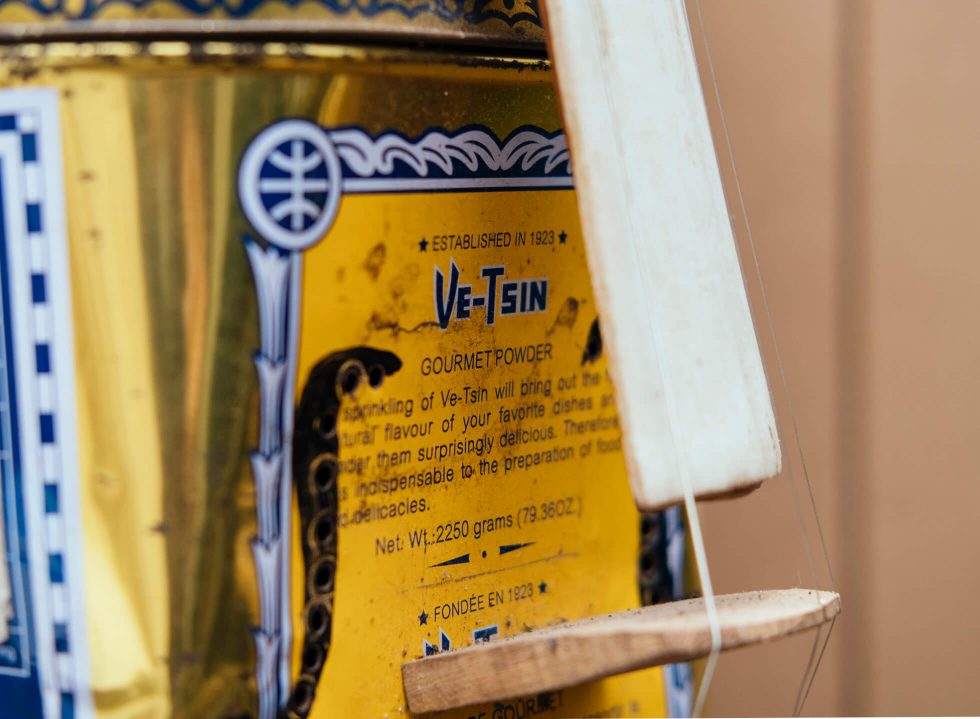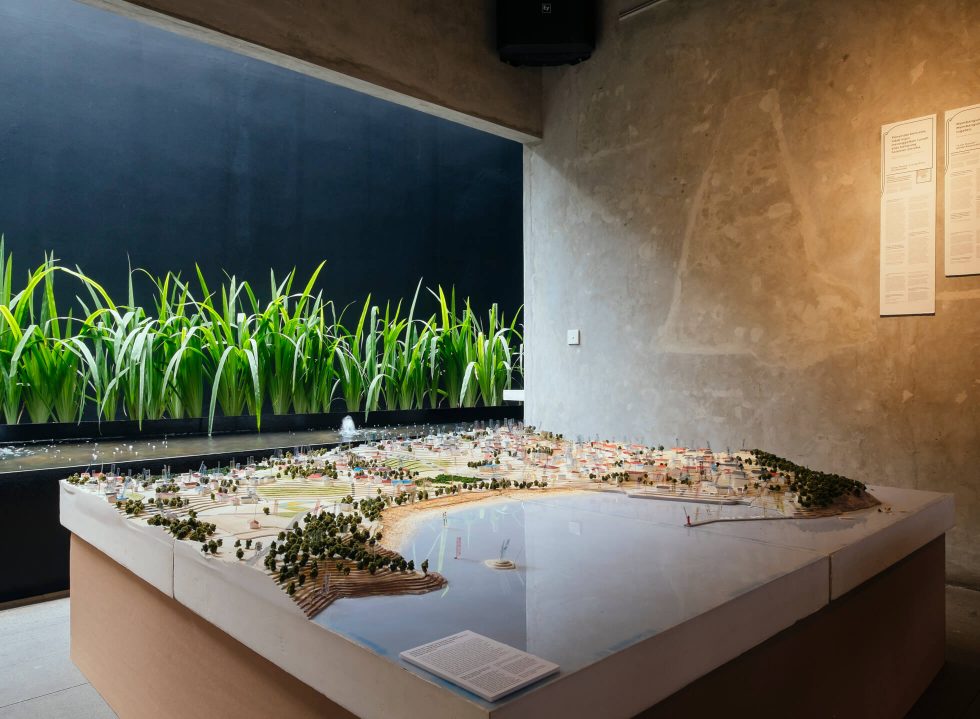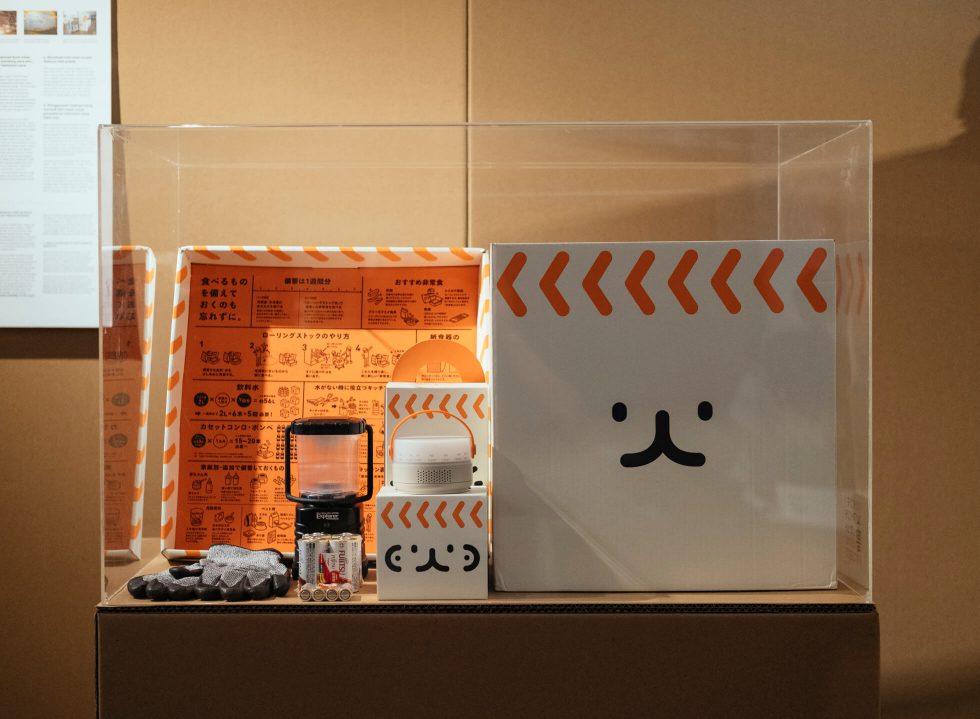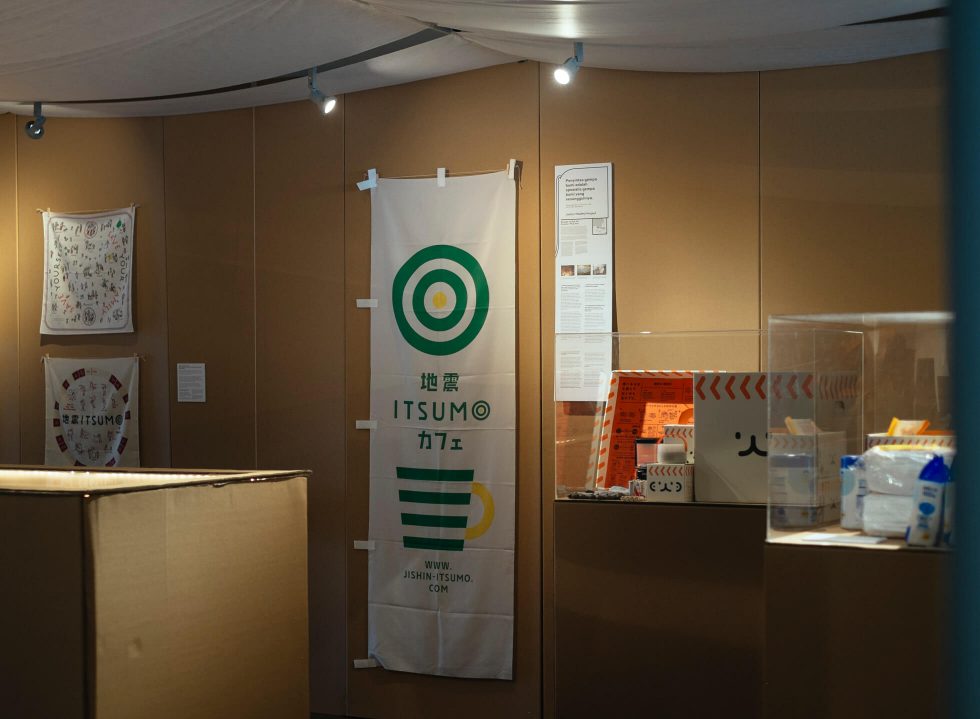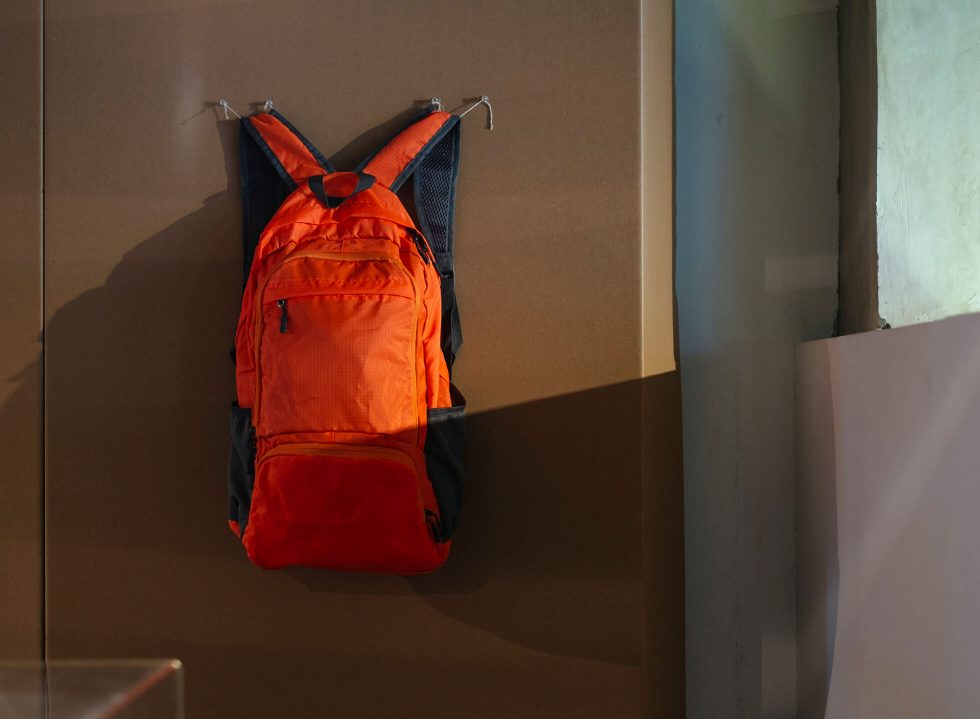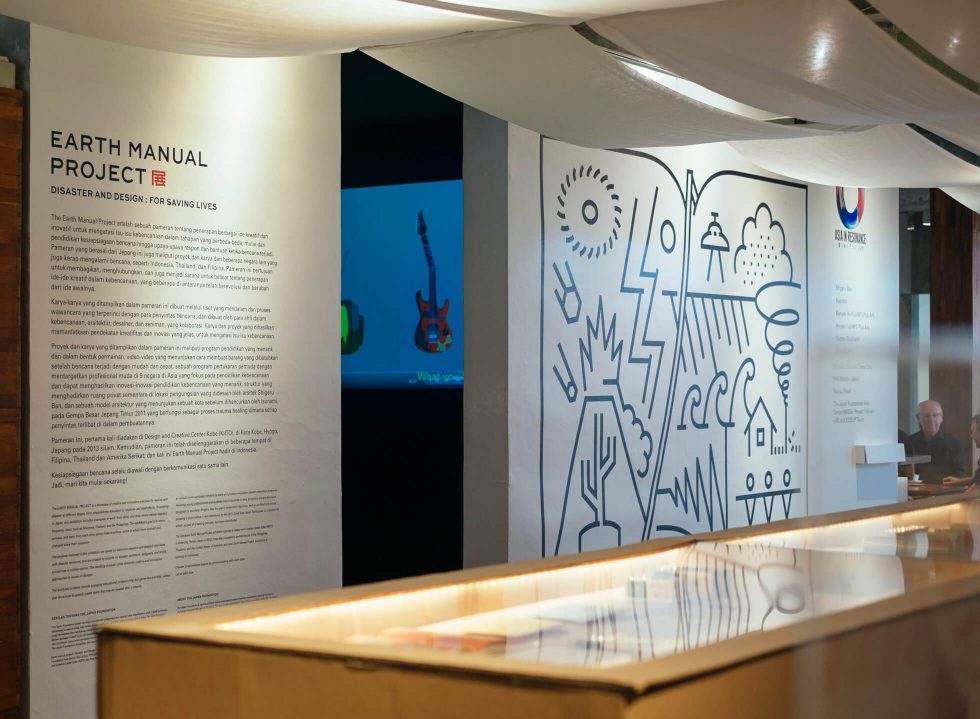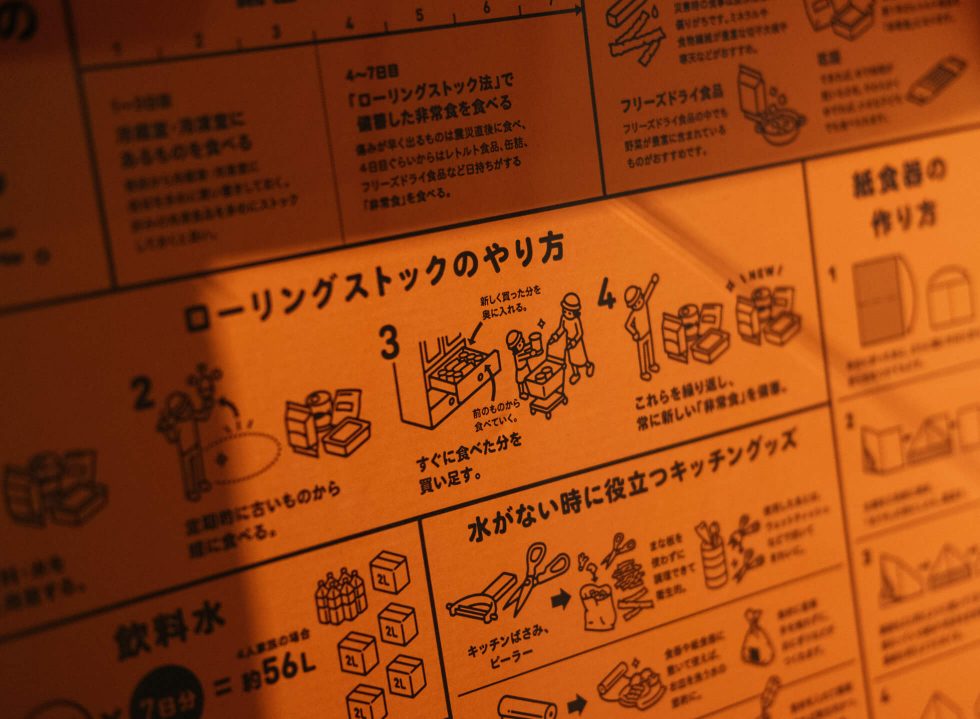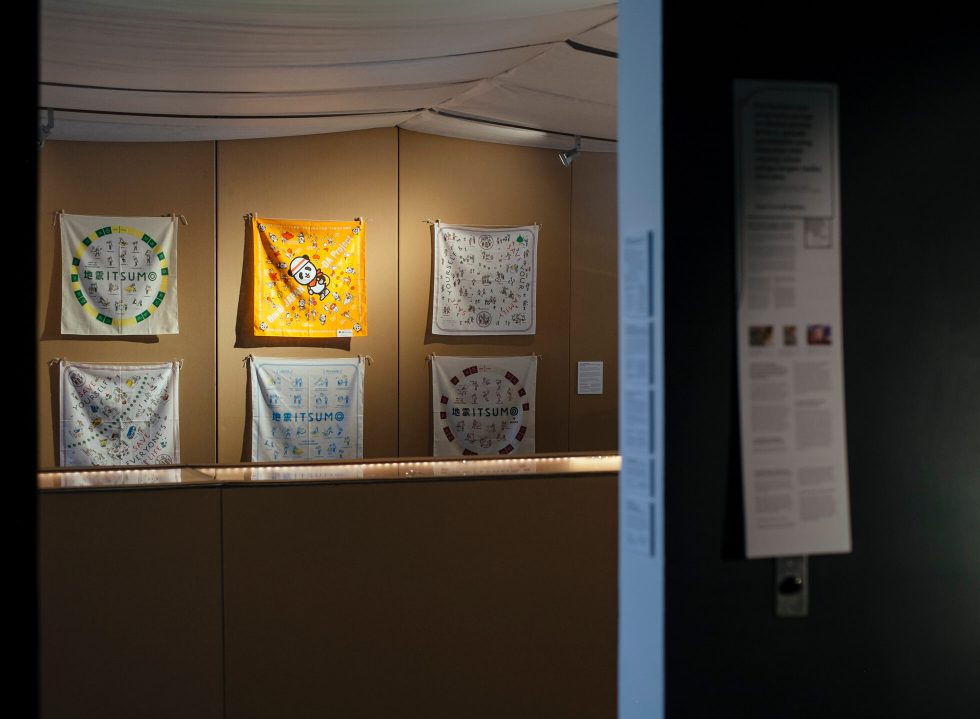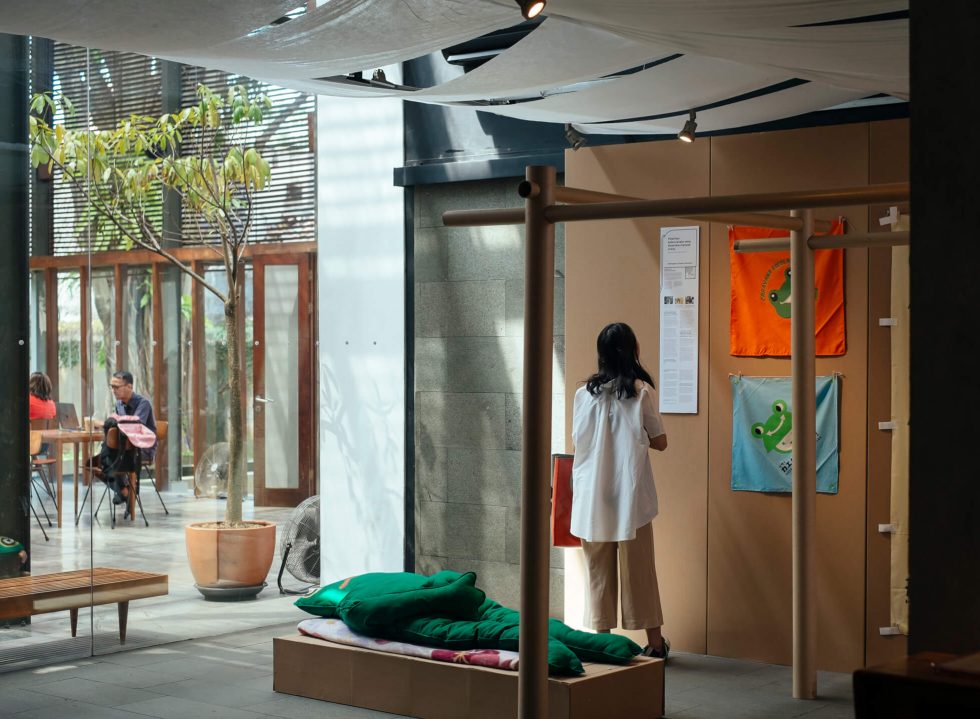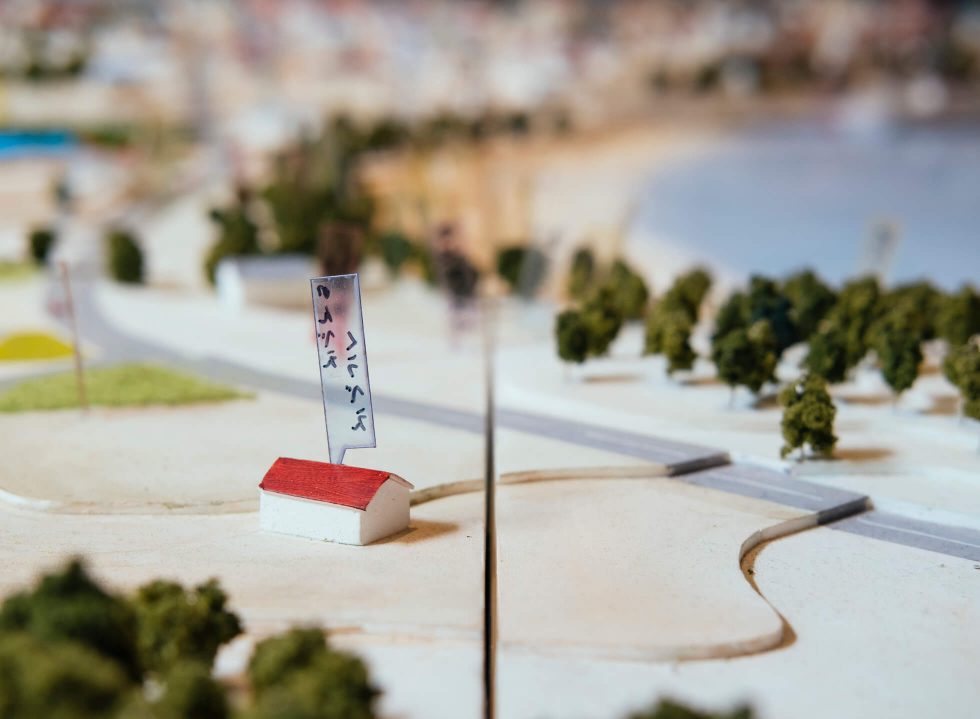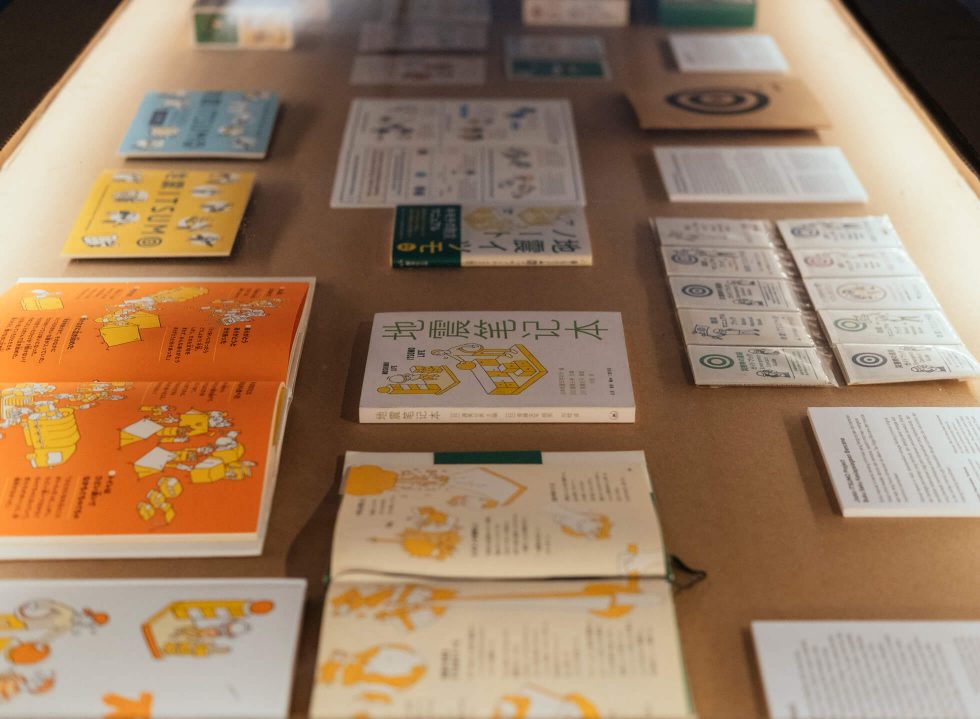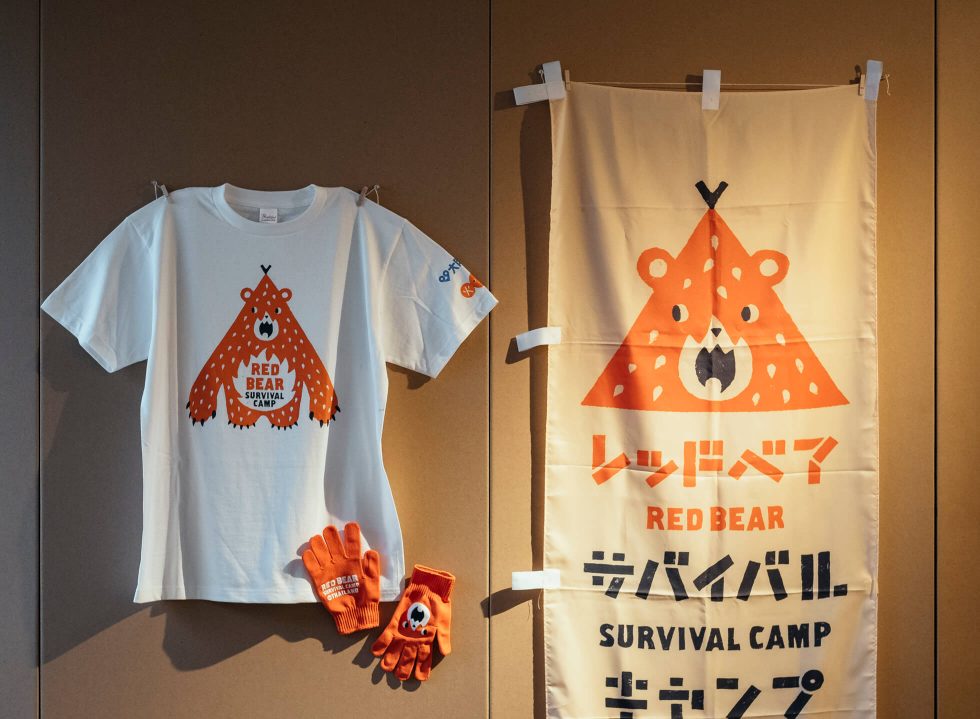“Art is a strong communication tool to spread information related to disaster risk to public,” reads an excerpt from Earth Manual Project, a collaborative exhibition between the Japan Foundation Asia Center, Dia.lo.Gue, FFFAAARRR, LeBoYe Design, DUSDUKDUK and MILES Film, and in cooperation with Design and Creative Center Kobe (KIITO) and Plust Arts.
Taking over the Dia.Lo.Gue art space in Kemang, the exhibition features various disaster relief programmes and projects by architects, designers, artists and collaborations from Indonesia, Thailand, Philippines and Japan. The exhibition emphasises on survivors as the true experts of disasters and the important role of art and design as coping mechanisms and tools of relief.
To start, the exhibition showcases the Jishin ITSUMO Project by Japanese art director Bumpei Yorifuji that produced a kit of emergency goods to help survivors when day-to-day amenities are unavailable. A large handkerchief, for example, comes with interesting designs to present its multiple uses, including as a mask to prevent dust inhalation, as a tourniquet to stop bleeding, and as the snake and ladder board game for the kids to alleviate boredom as they’re stranded outside.
The exhibition also showcases innovative programmes implemented to educate communities on disaster preparedness. The toolkits made by the HANDs! Project includes Putar Otak (Brain Twister) card game that challenges players to think creatively on utilising objects during emergency situations, completed with an engaging illustrated notebook for children that inserts important disaster information, games and trivia. Likewise, through a series of animation, Roo su Flood videos from Thailand relays important information about coping with flood disasters.
The Paper Partition System 4 created by Japanese architect Shigeru Ban, addresses the importance of privacy for survivors in evacuation facilities by creating a shack made of recycled materials such as paper tubes and canvas. Simple, lightweight, and cost-effective, the installation embodies how architecture, design and technology can contribute in life’s most dire situations. And lastly, Lost Homes, a collaborative project by Japanese architect Osamu Tsukihashi produced an architectural model of an area hit by a catastrophe in the effort to retrieve survivors’ memories for reconstruction and recovery.
The exhibition is as informative as it is poetic; a primary example of how art and design serves an important role in society and in this case, as a medium to transfer important information, relieve emotions and transform lives of individuals in the most of unlikeliest cases, like natural disasters. With the devastating earthquake and tsunami in Palu, Sulawesi last year, the message should resonate even louder in a country that is naturally exposed to nature’s volatility and disasters.
Earth Manual Project Disaster and Design: For Saving Lives runs from 2 May to 26 May, 2019 at Dia.Lo.Gue
